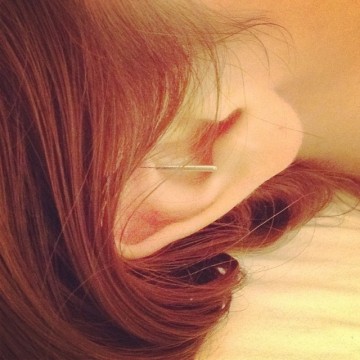For thousands of years, acupuncture has been utilized as a treatment for chronic pain and other physical and mental ailments. While the practice originated in China, its popularity spread to Western Europe, the United States, and Canada in the second half of the 20th Century. Acupuncture’s historical presence has not granted it immunity from modern criticism, however: traditional medicine practitioners have balked at the foundation of the therapy, arguing that there is no scientific evidence that so-called meridians or acupuncture points exist. On the other hand, a growing number of Western physicians and scientists have begun affirming its benefits, noting that acupuncture stimulates the nerves in the brain and spinal cord, which in turn promotes the release of seratonin and opioids–both considered “feel good” chemicals.
So, what exactly does acupuncture entail? Traditional acupuncture involves an acupuncturist inserting needles at various depths and places throughout the body. A patient may initially feel a slight pressure or tingling upon insertion, but any pain should dissipate quickly. In some instances, needles are heated and placed below a dried herb called mugwort. Another technique involves connecting electrical wires to acupuncture needles running a weak current through them.
Last weekend, I decided to make my foray into acupuncture. Before arriving at my appointment, I was asked to fill out a number of different forms that asked about everything from my medical history, diet, body temperature, and energy levels. When I met my acupuncturist, we sat down and discussed my reasons for trying acupuncture. Among other concerns, we discussed anxiety and low energy levels. I was very impressed with the level of knowledge and curiosity that the acupuncturist expressed toward my issues, and he asked many in-depth questions about my history and present afflictions.
When we had covered the preliminary inquiries, the acupuncturist ushered me into a separate room where the actual process would take place. This practice is called ‘community acupuncture,’ meaning that clients are situated together in a single room as opposed to each individual receiving a private room. In part, this lends to the practice’s affordability: each treatment is offered on a sliding scale, from $20-50, depending on what the client can afford. The room housed four different chairs, and the therapist asked me to select one depending on whether I preferred a more upright or reclining position. I chose the latter, and upon lying back, the acupuncturist began inserting the tiny needles at various points across my body. Since my issues are more emotionally oriented, the needles were placed in such a way that the energy would be forced down, as the acupuncturist explained. He inserted needles in my feet, shins, hands, forearms, stomach, ears, forehead, and, finally, the crown of my head. In some areas, I could feel the initial needle insertion, but it wasn’t at all painful. Once completed, the acupuncturist turned on some relaxing music and left the room.
During the first few minutes, I felt very uncomfortable. Rarely do we ever sit, alone, without the added stimulation of technology, coworkers, music, etc. It was a bit like meditation; thoughts and judgments began to flood my mind, and I began to worry about the possibility of another client entering the room. However, after about 10 minutes, my mind began to calm and my body entered a deep relaxed state. About 20 minutes into my treatment, another person did enter the room, and while the voices were initially disruptive, I soon began to disregard their presence and resumed my meditative state.
After 45 minutes, the acupuncturist took out the needles and we discussed how I was feeling. While I felt relaxed, he told me that any significant changes are likely to emerge only after 2 or 3 appointments. My favorite part of the appointment was the payment: instead of handing the acupuncturist my payment, I was asked to simply place whatever I could afford into an envelope, to be placed in a separate box. It felt great to receive no judgment for the amount I paid.
Overall, my first acupuncture experience was a positive one. I appreciated the professional service, the level of care given to each client, and the friendly demeanor of my acupuncturist. I am looking forward to continuing treatment in the future, and I’ll be sure to return to Peaceful Dumpling to report my progress!
If you are located in Boston, you can visit Acupuncture for Everyone at 581 Boylston, Suite 407, Boston, MA 02115. If you are in another section of the country, search online for community acupuncture in your area.
Also in Holistic: Holistic Approach of Headaches and Migraines
5 Flavors of Food to Balance Your Qi and Restore Your Health
___
Photo: julochka via Flickr





